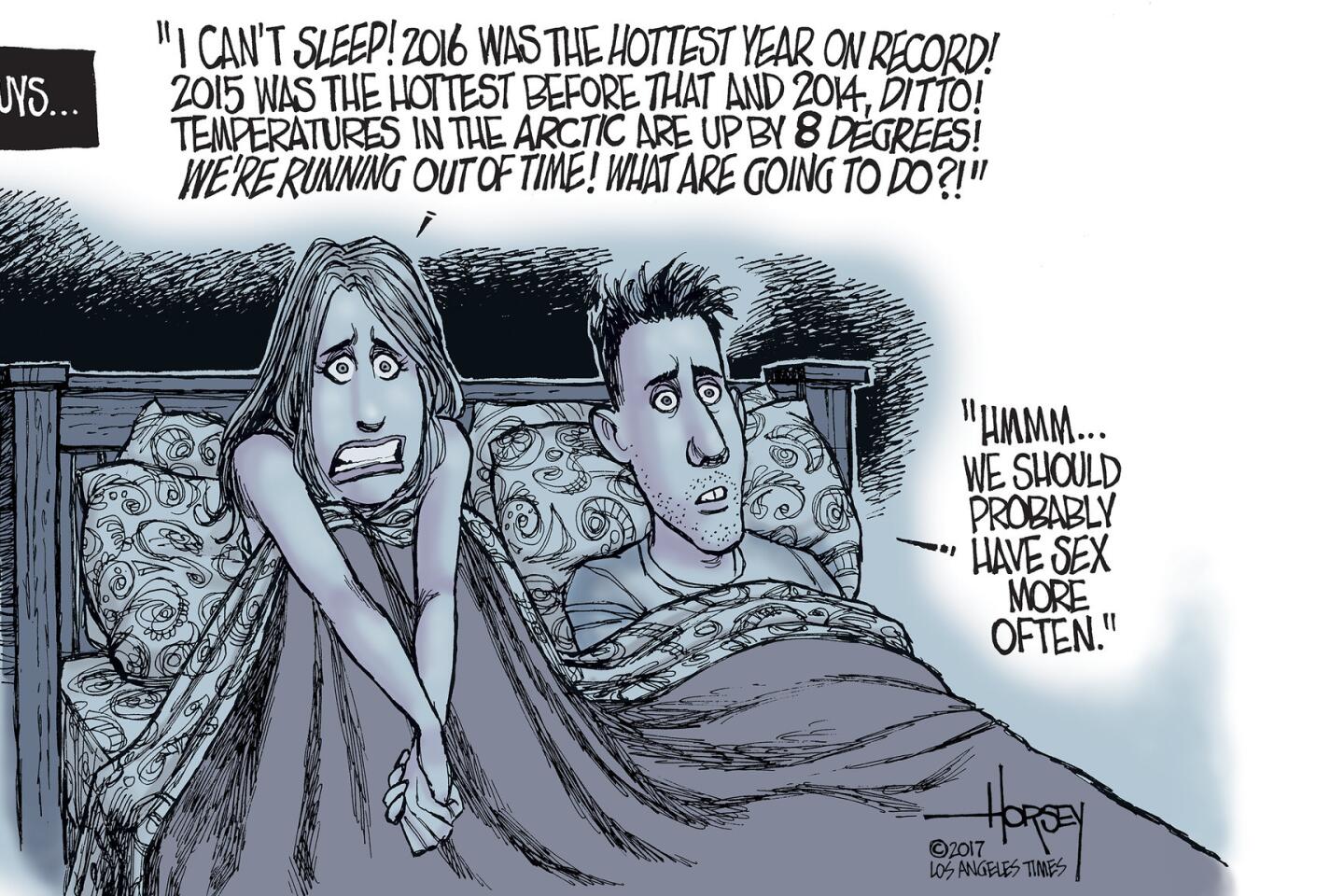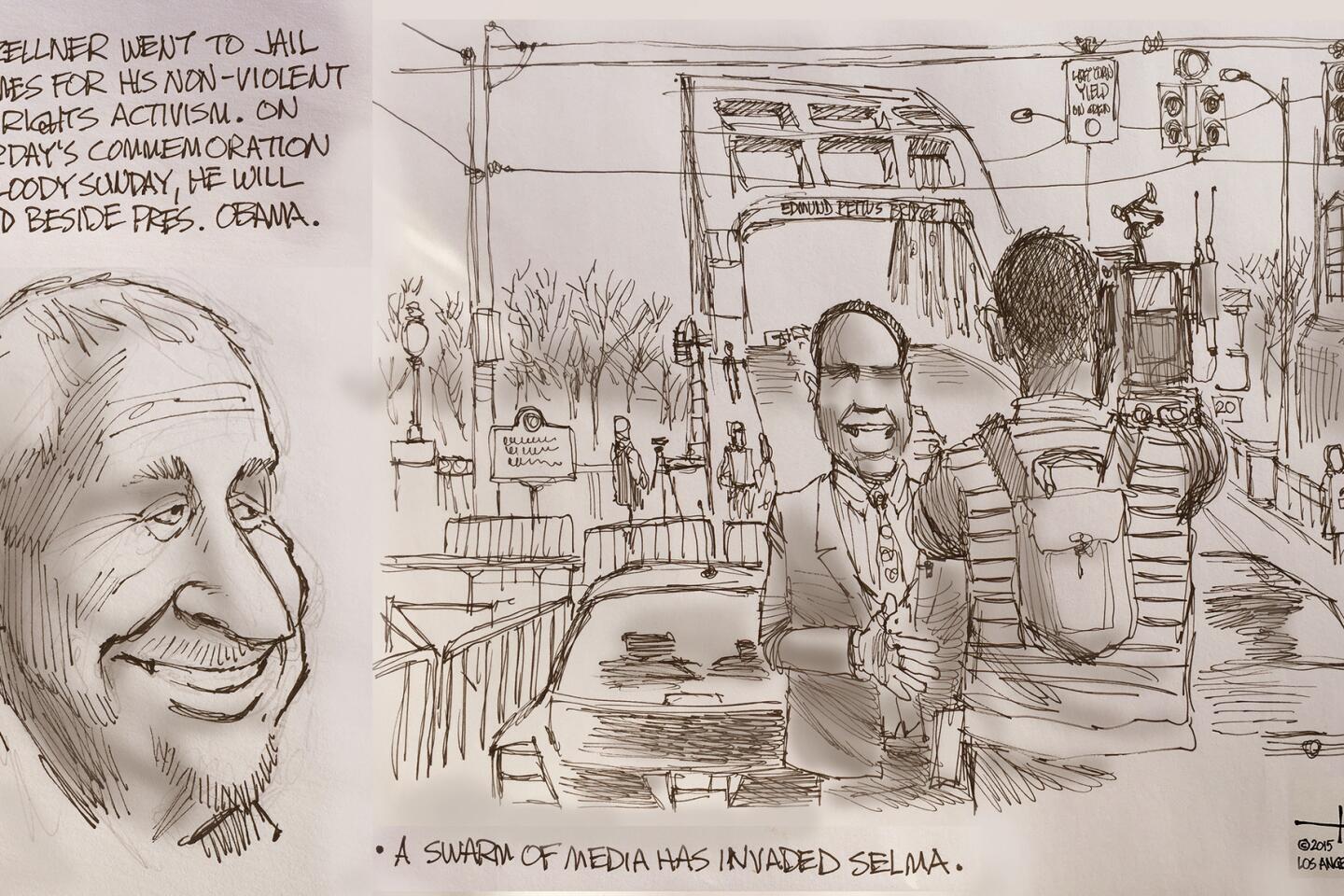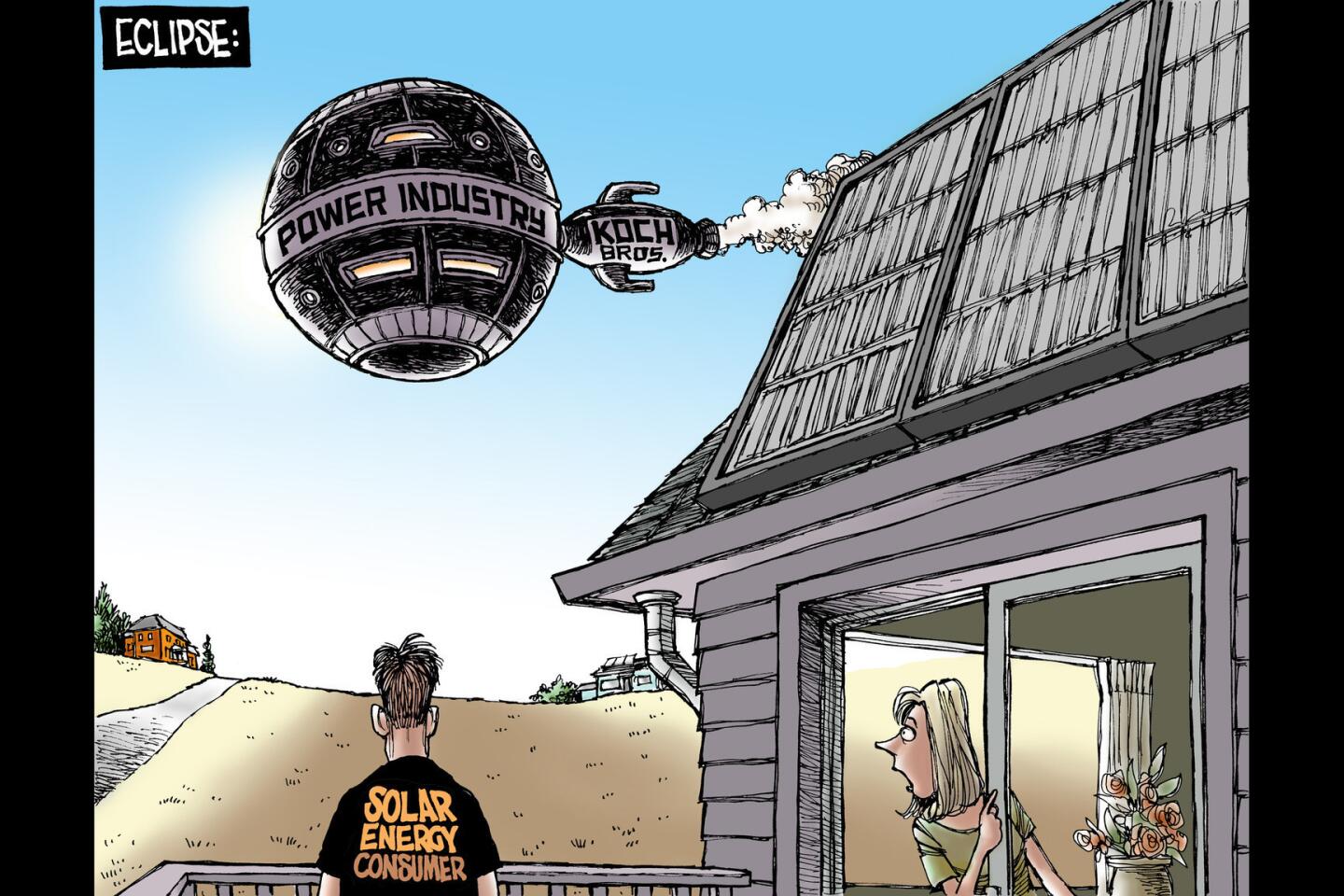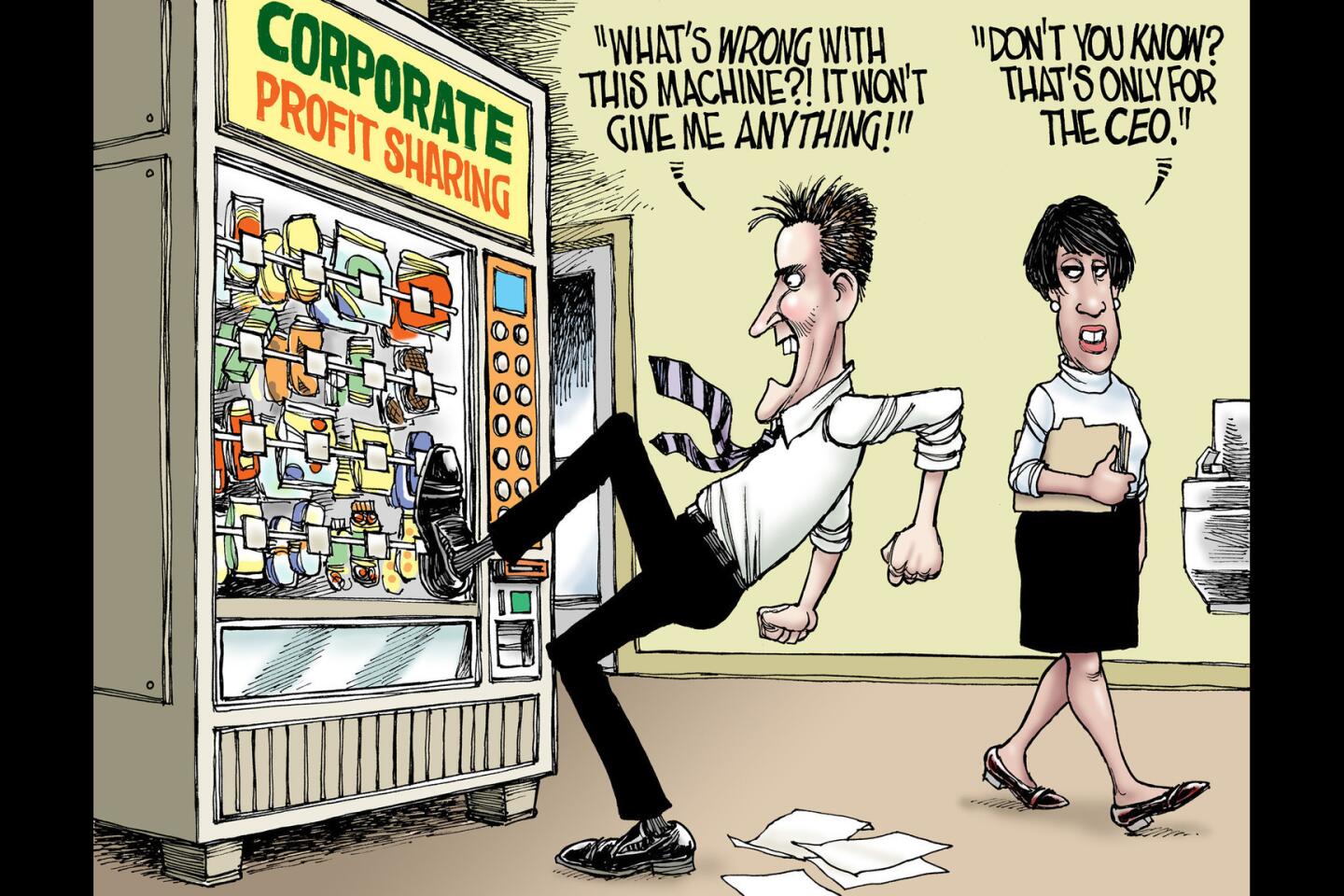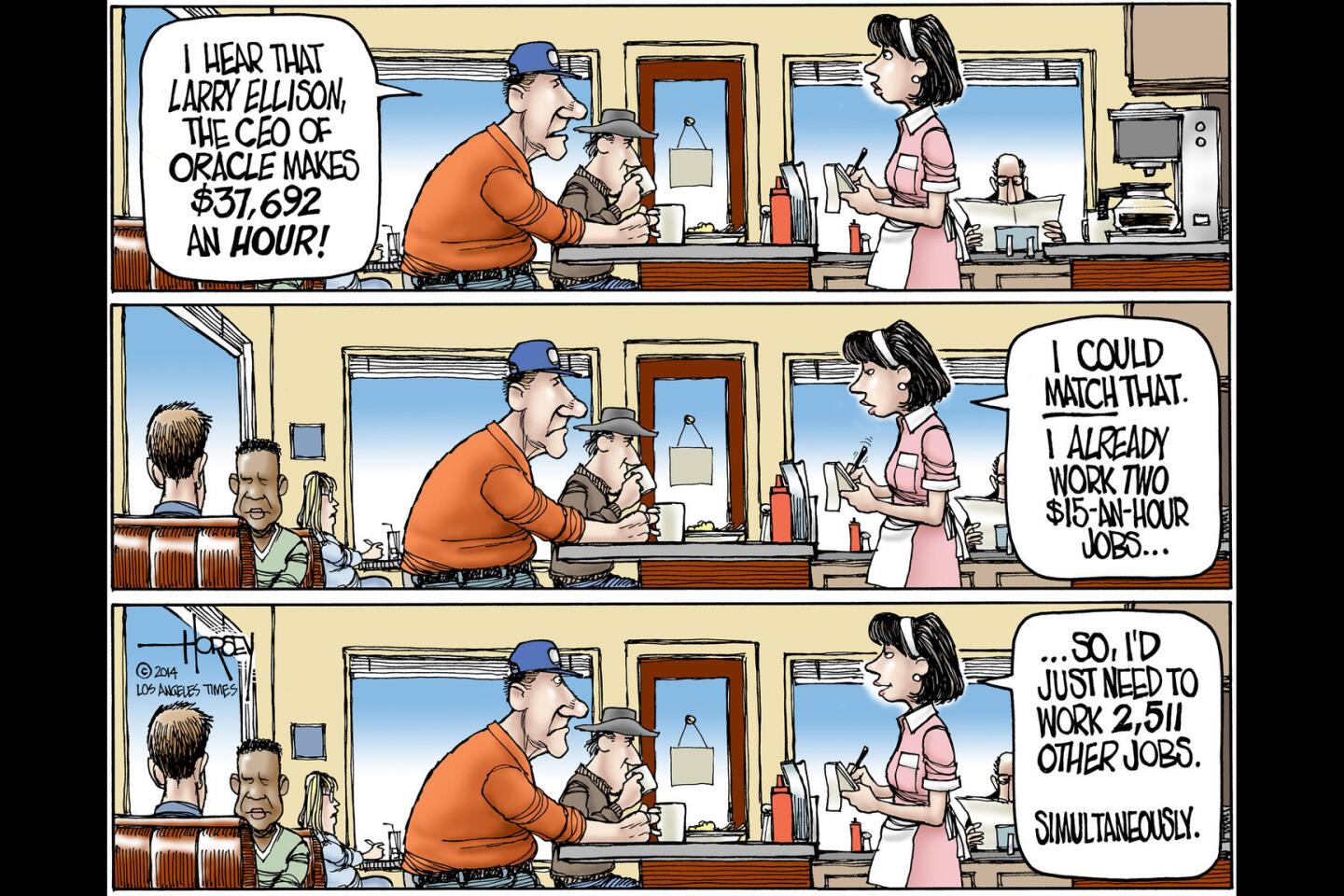To blunt Trumpism, resistance will need to translate into votes
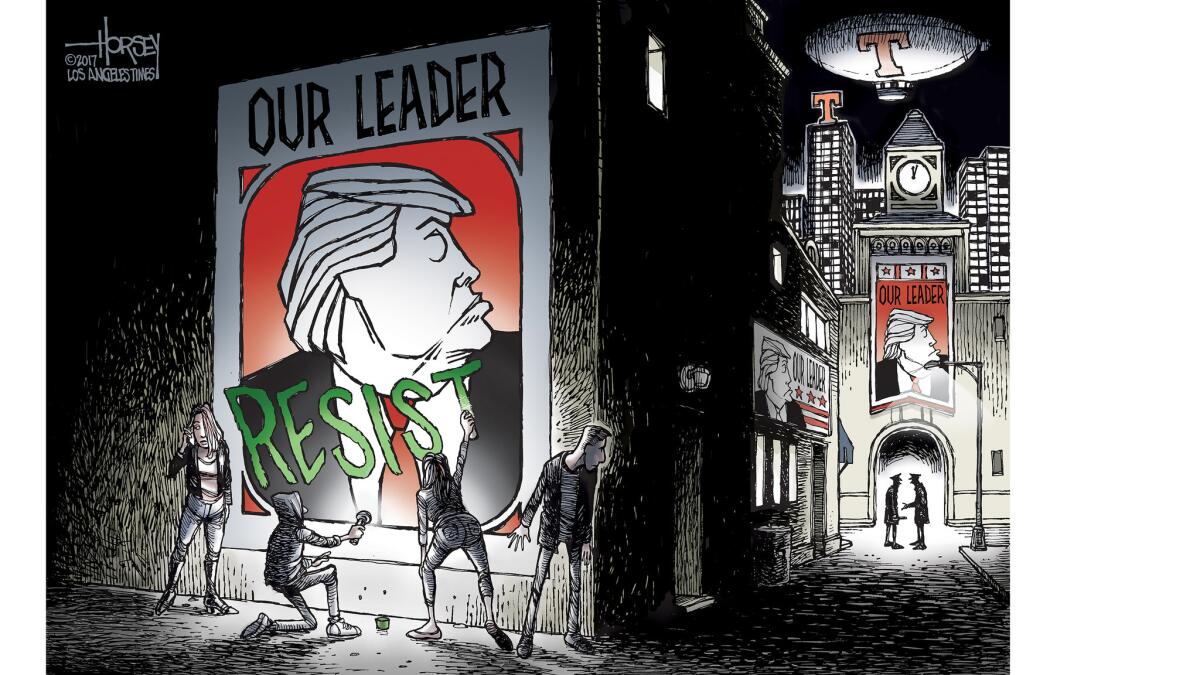
- Share via
Republican members of Congress will be happy to return to the serenity and safety of Washington after spending a week back in their home districts either hiding from Trump-troubled constituents or braving a gantlet of angry protesters at raucous town hall meetings.
Democratic-leaning citizens are riled up. Even in small towns in the reddest of the red states, people of all ages are marching, picketing and shouting down politicians who are used to carrying on without ever having to deal with voters who disagree with what they are doing. The question is, will it make a difference?
The answer is, probably not right away. Yes, some GOP senators and representatives may pause to think before they carry out their promise to “repeal and replace Obamacare.” They may now have a better sense that even many of their Republican constituents have benefited from the healthcare law. But, knowing they have a man in the White House who will sign just about anything they pass, they will feel an overriding compulsion to push through sweeping changes in everything from banking regulation and environmental protection to rules about who can use which public bathroom.
The big buzzword on the left is “resistance.” Liberals are so freaked out by the election of Donald Trump and the right-wing policies he is trying to enforce with the support of the Republican-controlled House and Senate that they have mobilized to push back on every front. One model for their resistance is the populist-conservative tea party that sprang up in reaction to the passage of the Affordable Care Act in 2010. Tea partiers screaming about “death panels” hounded Democratic politicians running for reelection and helped switch control of Congress from the Democrats to the Republicans.
In 2018, Democrats will try to surf the rolling wave of protest to win back majorities on Capitol Hill. However, that wave will need to be gargantuan to override the stark numbers that shore up the Republican stronghold.
In the Senate, Democrats will be defending 25 seats (including two held by Independents who caucus with them) while Republicans need to protect just nine (counting the special election in Alabama to fill the seat left open by the new attorney general, Jeff Sessions). Most of the GOP senators hail from solidly red states; only one, Nevada Sen. Dean Heller, appears to be at all vulnerable. On the other hand, nine Democratic senators are holding precarious perches in states won by Trump. The way it looks now, Democrats will have to fight hard just to hold the seats they have and keep the GOP from winning a 60-seat, filibuster-proof majority.
Despite the decades of gerrymandering that have produced safe districts for incumbents almost everywhere, Democratic prospects for taking back power in the House are actually brighter than in the Senate. They need to pick up 24 seats to win a House majority. According to a statistical analysis by Harry Enten on the FiveThirtyEight blog, that could happen “if nearly every person who dislikes the president votes for the Democratic candidate in their House election.” Enten notes there has been “an increasingly strong relationship between how people feel about the president and how they vote for Congress.”
The Democratic Party’s weakness has been in recruiting good candidates in tough races. Reportedly, the upsurge in anti-Trump activism may be fixing that problem. Two early tests will come in the next few months as special elections are held in Georgia and Montana to replace Tom Price and Ryan Zinke, Republican members of Congress who have been appointed to the Trump Cabinet. Democrats have a decent shot at winning both seats if they find strong contenders and, just as important, if Democrats show up in big numbers to vote for them.
One of the barbed chants of the resisters is “we are the majority!” That is not an idle boast. As we all know (well, all of us who do not believe the fairy tale about millions of phantom illegal voters), Hillary Clinton beat Trump by 3 million votes in 2016. Year after year, in total ballots cast, Democratic candidates for the Senate and the House rack up far more votes than do Republicans. But, thanks to the way district lines are drawn and the tilt toward small states that is embedded in the Constitution, the Republican Party enjoys a structural advantage that negates those numbers. It does not help, either, that young people and minorities have a tendency to skip voting in nonpresidential elections. So, 2018 will have to break the pattern and beat the system.
The resistance is loud and big and disruptive, but will it translate into victories? You say you want a revolution? The ballot box is where it will, or will not, happen.
Follow me at @davidhorsey on Twitter
More to Read
A cure for the common opinion
Get thought-provoking perspectives with our weekly newsletter.
You may occasionally receive promotional content from the Los Angeles Times.

















